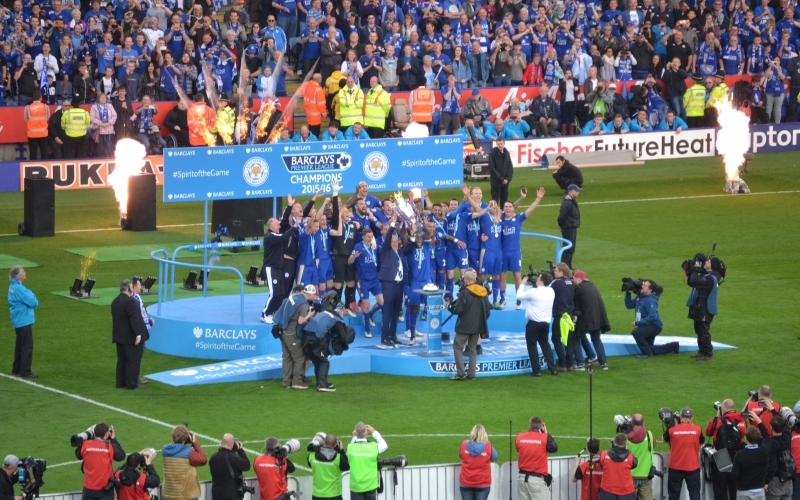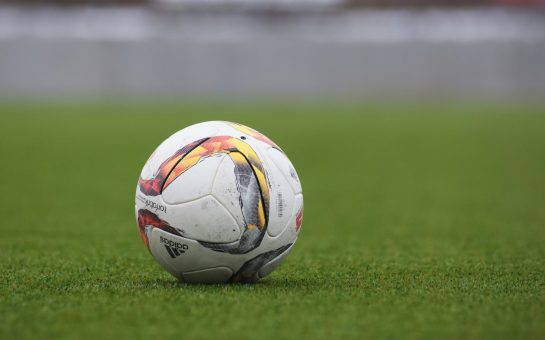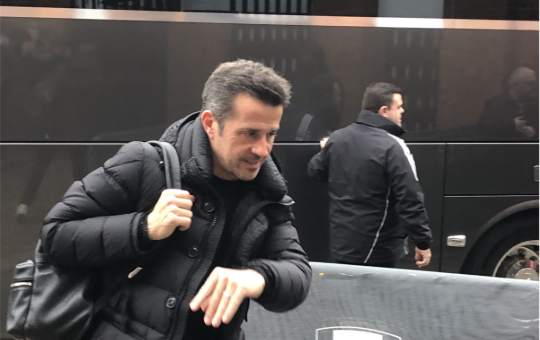A world of special ones, kung fu kicks and Invincibles.
Where lasagnes can cause European heartbreaks and Foxes can cause a man to present a television show in his underwear.
But does it remain the most competitive league in the world?
Can George still slay the dragon? Can David halt Goliath? Can Balboa outlast Creed?
Gone are those cold, rainy nights in Stoke. Gone too are the days of West Brom deploying a back four made up entirely of centre-halves.
So, to answer that question, you must first establish, in what sense do you mean ‘competitive’?
Over the last decade, we’ve gone from having the ‘Big Four’ of Liverpool, Arsenal, Chelsea and Manchester United, to adding Manchester City and Tottenham to that bunch to make a ‘Big Six’.
So, in that regard, yes.
In the last 10 years, more teams have had legitimate Premier League title ambitions than ever before.
However, if you look at the stranglehold those six teams have had on the league in chasing said glory – as you can see in the graphics below – your answer may well be no.
Unless West Ham overturn their two-point deficit to Manchester United on Sunday, sides not included in the ‘Big Six’ will have finished in the top six in the league on just seven occasions in the last 10 years: Leicester (three times), Everton (twice), West Ham and Southampton (both once).
By comparison, 53 ‘Big Six’ XIs have filled up those top spots in that time: Manchester City (ten times), Tottenham, Manchester United and Chelsea (all nine times) and Liverpool and Arsenal (eight times each).
What all of this means is that, over the last ten years, ‘Big Six’ sides have regularly made up for over 40% of the total points accumulated by every team that has played in the Premier League.
Considering they have only played 30% of the overall games between them – 300 of which have been fixtures between themselves, where both sides cannot earn maximum points – this is quite an impressive statistic.
As Matt Jarvis, the owner of Matt Jarvis Writing put it: “I’m 43 now. When I was growing up, the ‘Big Four’ in football were Everton, Tottenham, Liverpool and probably Arsenal at that point, during the 80s and 90s.
“Manchester United and City weren’t really considered in the top five or even the top six at that point.
“Maybe it’s more competitive in the midfield but, the Leicester season aside, in recent years you can have a look at the table and have a fairly good guess as to where everybody is going to finish.”
However, not everyone subscribes to this point of view.
Dan Tracey, host of the Real Football Cast, said: “The ‘Big Six’ is a bit of an outdated moniker, as the ‘Big Six’ are not always the best six anymore.
“The gap is certainly shrinking. The ‘Big Six’ may remain at the top table, but I think the seats will get moved around in the coming years.
“You’ve got the likes of West Ham who have proven a bit of a nuisance over the last couple of years and Wolves, who with Jorge Mendes, they’re not mucking about. Leicester are even there and thereabouts.”
Tracey will point to the growing spending power of teams outside the ‘Big Six’ as evidence that, in the coming years, more challengers for big honours will emerge.
In the last decade, the net spend of Premier League clubs on transfers has rocketed, as the graphics below illustrate.
Although the net spend per season among the ‘Big Six’ has more than trebled over the last 10 years, the rise among the other remaining Premier League clubs is even more eye-opening.
The net spend of the other 14 clubs in the 2020/21 season was more than 11 times the figure they recorded in 2011/12.
What this means is that, for three of the last four seasons, less than half of the league’s overall net spend on transfers has been accounted for by the ‘Big Six’ of Manchester City, Liverpool, Chelsea, Tottenham, Arsenal and Manchester United.
At the start of the decade, those six sides went four consecutive seasons where they had more than 50% of the league’s net expenditure.
“You just have to look at what happened during the pandemic,” Tracey added.
“On the TV and broadcasting rights alone, Premier League teams were not only able to just survive, but some of them even thrived, which really showed how teams across the table have such spending power now.
“The top six gap is narrowing, so big teams cannot afford to stand still.”
This line of thought seems sound, however, the major problem you encounter arguing it is that the ‘Big Six’ are not standing still.
Whilst they may not make up more than 50% of the league’s net spend anymore, individually, they are still, by and large, the league’s biggest spenders.
What this means is that, instead of the gap in spending power to the ‘Big Six’ decreasing, it is actually just increasing slower than previously.
Because this has gone on for so long, these now giants of world football have assembled expensive squads that are littered with star talent throughout.
As a result, the likelihood of an under-the-radar signing reversing this status quo – such as in 2011/12 when Papiss Cissé propelled Newcastle above a Chelsea side led by a floundering Fernando Torres – seems inherently less likely.
With clubs like Manchester City demonstrating Real Madrid and Barcelona-like pull in signing Erling Haaland, what chance realistically do marquee signings such as Christian Eriksen and Philippe Coutinho have of enabling the likes of Brentford and Aston Villa to bridge the existing gap?
If ‘Big Six’ clubs do sign some expensive flops, they now have such spending power that they can just replace them in the next transfer window, which means that, even if smaller teams do get their recruitment right, it won’t necessarily be enough for them to stand a chance of a tilt at Champions League football.
“I don’t think most of the top European leagues are competitive anymore,” Jarvis added.
“The Championship is more competitive, where if one team gets a win, they can suddenly shoot right up the table.
“Look at Norwich, they’re a yo-yo club. They could go up again next year but, in all likelihood, they’d only go straight back down, as they’re simply not able to sign players that are good enough.”
Currently then, it seems that an end to the stranglehold the ‘Big Six’ have on the top spots of the Premier League is not yet in sight.
However, the rate at which they’re able to dominate the transfer market is decreasing, which is encouraging.
As they say in football, money talks.
Therefore, although the Premier League may not have become more competitive in the last 10 years… as for the next 10 years?
Well, only time will tell.
Featured image credit: Peter Woodentop via Wikimedia Commons under CC BY-SA 2.0 license





